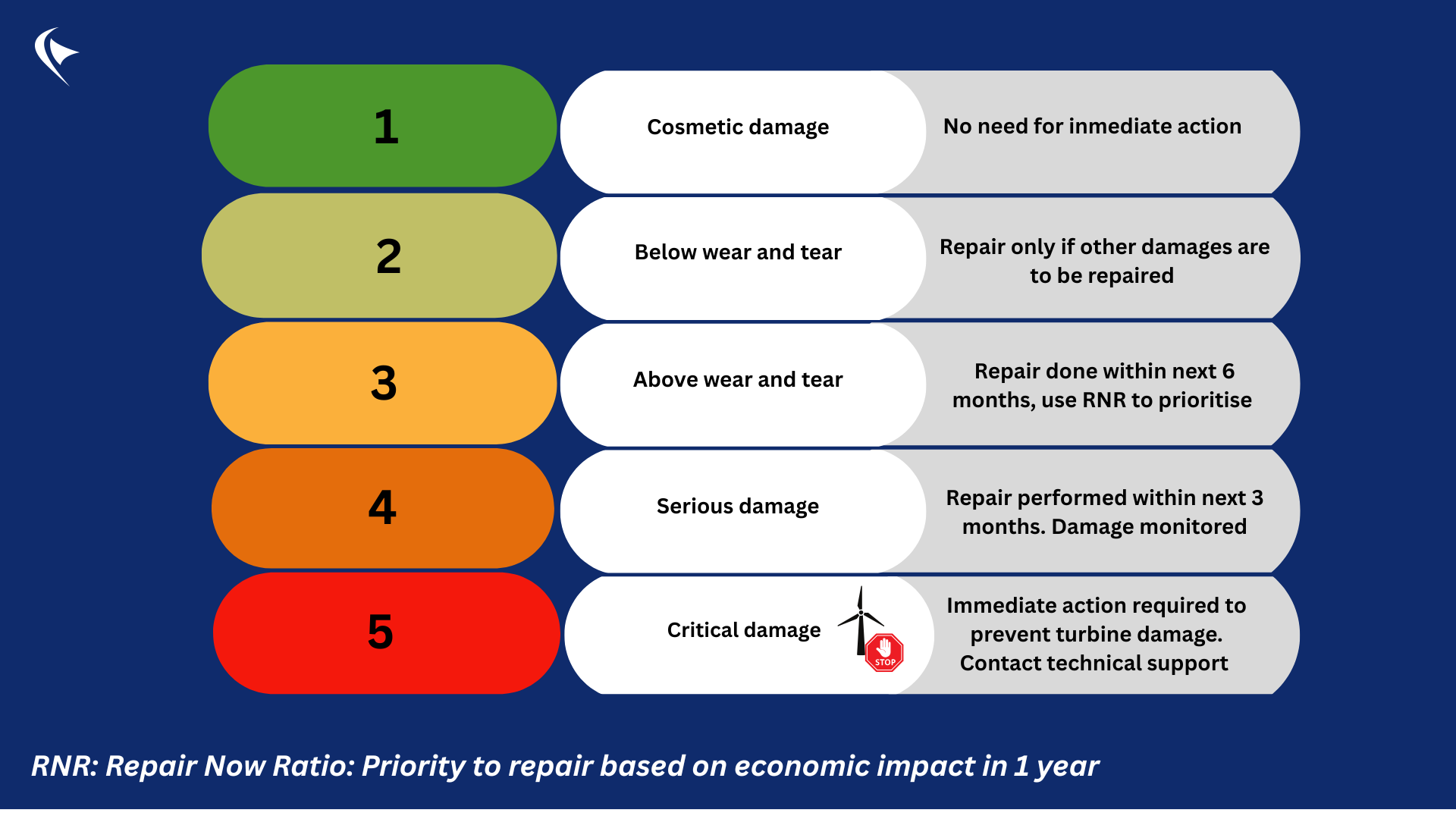Dhalion Guidelines
Why have we developed our own guidelines after years of using the Bladena Standards?
Because we listen to our Customers!
While the 5 severity categories ( see image) were well-received, many users needed more granularity in how certain damage types and depths were classified. So, we’ve refined our standard to meet that need — without losing continuity.
All new classifications have been mapped to the existing system, ensuring alignment between past and future inspections.
Key improvements include:
🏴Simplified names: Type names are generally more concise and consistent (e.g. “45 Cracks on Surface (Cutting from Factory)”→ “Crack – 45°”)
🌍 Location removed from types: Terms like “TE-Trailing Edge” have been removed from damage type name. (e.g. “Open Bond Line in TE” becomes “Open bond line”) So from now on the type is attributable to any location.
#️⃣More specific damage types and depths: The number of types and depths has increased slightly. This improves tagging accuracy and downstream analysis.
(e.g. Other Cracks on Surface-> becomes two : Crack – Longitudinal & Crack- Transvers; and Depth passes from 6 options to a few more options))
Our goal is to improve clarity, accuracy, and usability across all users, inspections and reports. This is an important step towards making the system able to support various classification standards in the future.
